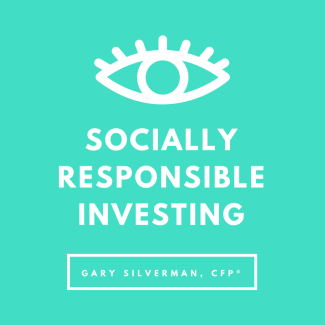
Managing your Socially Responsible Investments, Part 1
By Gary Silverman, CFP®
Over the last couple of decades, a new style of investing has emerged: Socially Responsible Investing (SRI). Letting more than your wallet guide your investing is not new. People have always invested in companies that represent what they believe in and shied away from those that don’t. But with the explosion of investment firms looking for a niche to fill, marketing in this area has made the public more aware of the possibilities.
When it comes to SRI, the main benefit is that your investment portfolio is aligned to (or more closely aligned, or at least not aligned against) your moral beliefs. The potential problem with this is that your portfolio’s returns could be lower and the volatility (risk) of your portfolio could be higher. Those are the generalizations…now let’s look at the details. First up, the reality of actually figuring out how to do SRI investing.
Most individual investors should invest through mutual funds, and most do. Mutual funds are, well, mutual. They are not designed with you in mind—rather they are designed with a large group of people like you in mind. As there are many people out there who are at least interested in SRI, there are funds that specialize in SRI. Now for the problem with that: How many people do you know believe exactly the same way you do?
To try to get close, the fund companies can aim in one of two directions. The first, and oldest, is to use exclusion. For instance, you may want to screen companies that produce or sell pornography, including hotels with adult movies available. As you can see, using an exclusion strategy, a fund would be looking at who not to invest in, and then build a portfolio using those companies that are not doing, promoting, or contributing to those areas.
The other method is to determine actions that you want a company to take and then choose your portfolio from those companies. This is the Inclusion method. This method is blossoming in the area of sustainable investing for those who will look for companies producing and promoting clean water products, renewable energy, and the like. Still others will choose companies that promote LGBT rights or other causes that are important to a segment of the investing public.
Whether your interests are best served by an inclusion or an exclusion method depends on your own beliefs and what funds most closely match them. For instance, if there is a company that provides low-cost medical equipment and supplies to refugees and this is important to you, then you might look for an inclusion fund that covers that area. But if you are also staunchly anti-abortion and they also help facilitate those services then you might want an exclusion fund to remove the company from consideration.
In any case, whether looking for a particular cause to support or one that you want to diminish, you are purposely reducing your investment choices. This can lead to problems—I’ll talk about that next time.
Gary Silverman, CFP® is the founder of Personal Money Planning, LLC, a Wichita Falls retirement planning and investment management firm and author of Real World Investing

